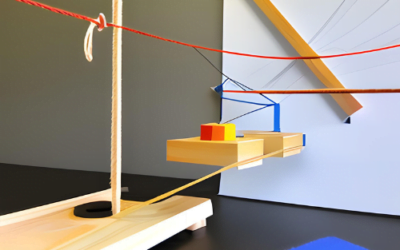Design and Build a Cardboard Box Guitar: Exploring Sound Production
Introduction:
In this project, we will guide you through the process of designing and building a cardboard box guitar. By constructing your own instrument, you will explore the principles of sound production and gain a deeper understanding of how vibrations create music. This project is a fun and hands-on way to learn about the physics of sound and unleash your creativity!

Materials Required:
1. Cardboard box (preferably rectangular or square)
2. Empty tissue box or shoebox
3. Wooden dowel or ruler
4. Rubber bands (various sizes and thicknesses)
5. Scissors
6. Pencil or pen
7. Craft knife (optional, for advanced designs)
8. Decorative materials (paint, markers, stickers, etc.)
9. Tape
10. Glue (optional)
11. Measuring tape or ruler
Procedure:
1. Prepare the Cardboard Box:
a. Choose a cardboard box of suitable size to serve as the body of your guitar.
b. Remove any flaps or openings from the box, leaving only the main structure intact.
c. If desired, decorate the box with paint, markers, or stickers to give it a personalized touch.
2. Create the Soundhole:
a. On one side of the box, mark a circular or oval shape as the soundhole.
b. Use scissors or a craft knife to carefully cut out the marked shape. Take caution while using sharp tools.
3. Build the Neck:
a. Take the wooden dowel or ruler and measure its length against the width of the box.
b. Cut the dowel or ruler to a suitable length for the neck of your guitar.
c. Attach the neck to the box by inserting one end into a slit or hole near the top of the box. Secure it with tape or glue.
4. Create the Fretboard:
a. On the side of the neck facing the soundhole, mark the positions for the frets using a pencil or pen.
b. For a simple design, mark the fret positions evenly along the neck.
c. For a more advanced design, use a craft knife to create shallow grooves to represent the fret positions. Take caution while using sharp tools.
5. Attach the Strings:
a. Take the rubber bands and cut them open to create long strips.
b. Stretch each rubber band over the soundhole, securing them to the neck at the top and bottom of the box.
c. Use rubber bands of different sizes and thicknesses to produce varying tones.
6. Tune and Play:
a. Adjust the tension of the rubber bands by tightening or loosening them to achieve the desired pitch.
b. Experiment with different string combinations and tunings to explore various sounds and melodies.
c. Pluck or strum the rubber bands with your fingers or a guitar pick to produce sound vibrations.
d. Use your other hand to press down on the rubber bands along the frets to change the pitch.
7. Explore and Experiment:
a. Test different playing techniques such as plucking, strumming, or using a slide.
b. Observe how changes in string tension, length, and thickness affect the sound produced.
c. Compare the sound of the cardboard box guitar with other string instruments, such as a real guitar or ukulele.
d. Record your observations and findings in a journal or notebook.
Conclusion:
Through this project, you have learned how to design and build a cardboard box guitar and explored the principles of sound production. By experimenting with string tension, length, and thickness, you discovered how these factors impact the pitch and tone of the instrument. Remember, creativity knows no bounds, so feel free to modify and enhance your cardboard box guitar to create your own unique sound. Enjoy your musical journey!



0 Comments